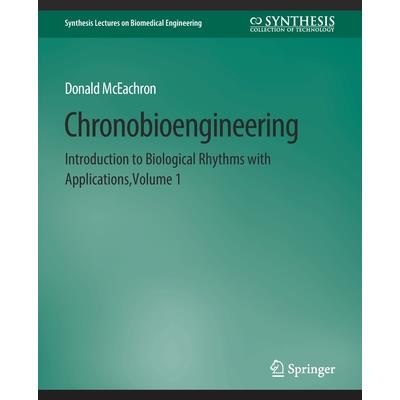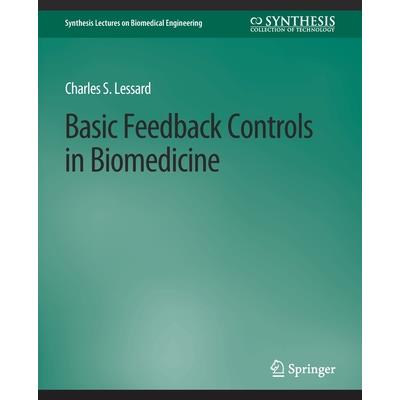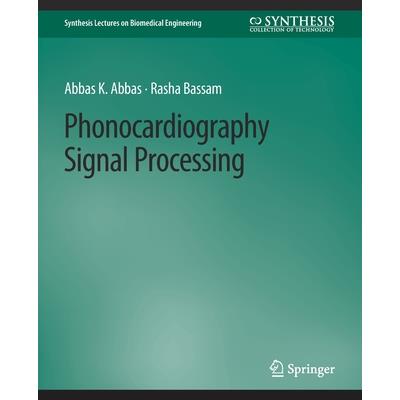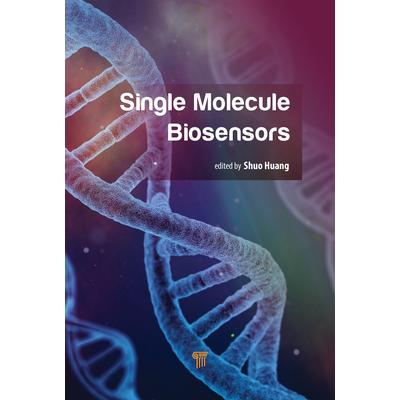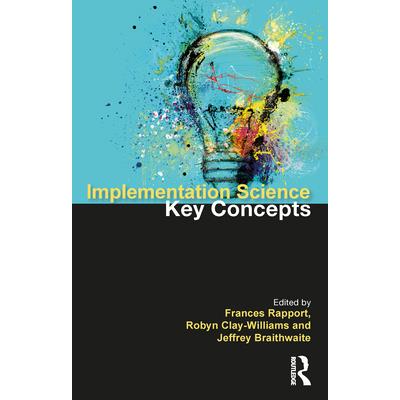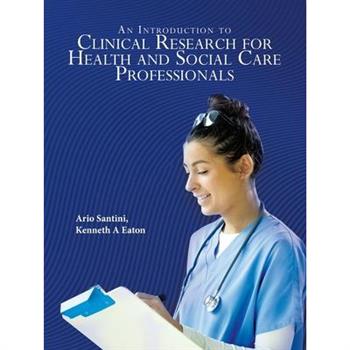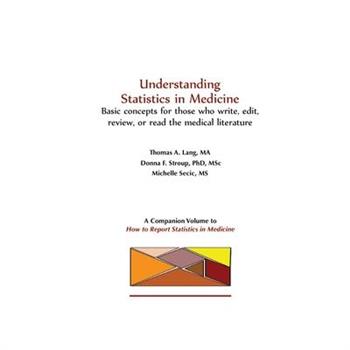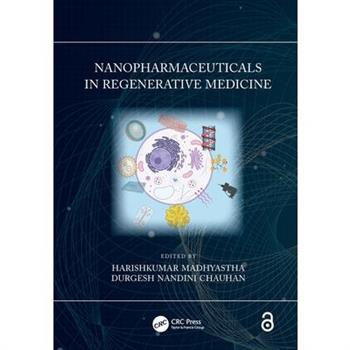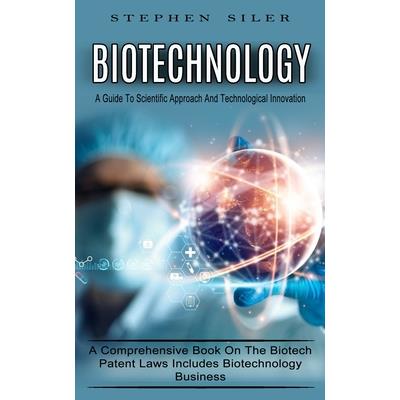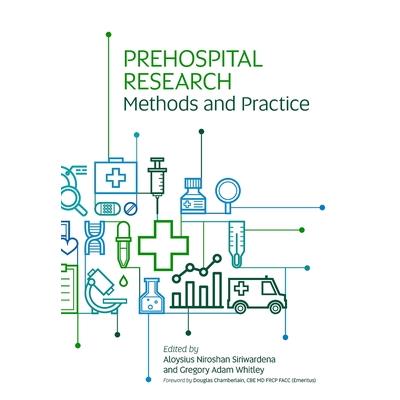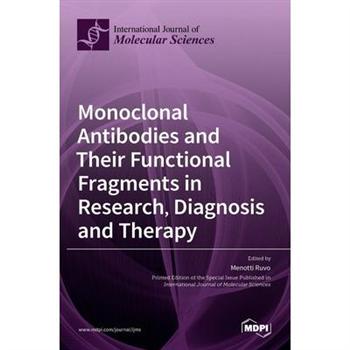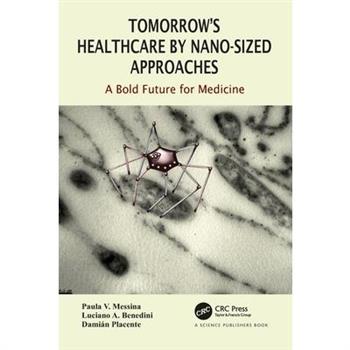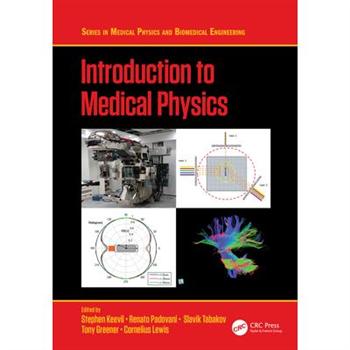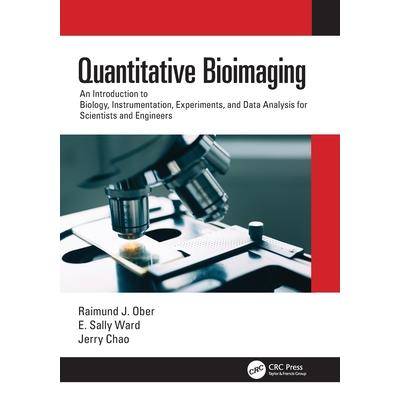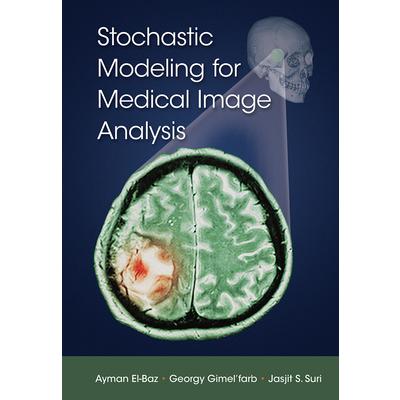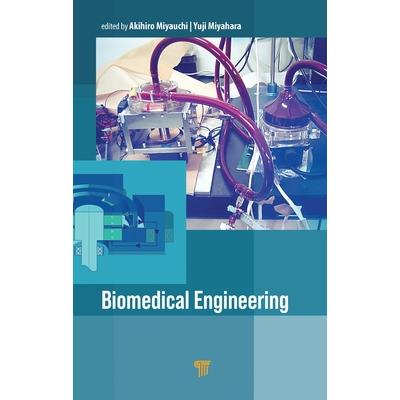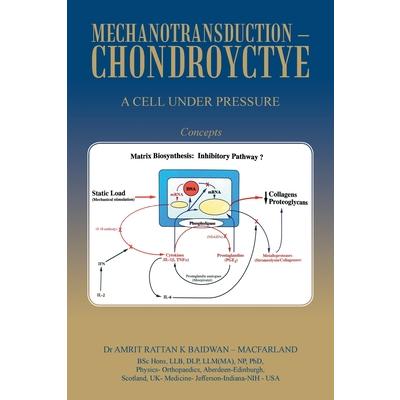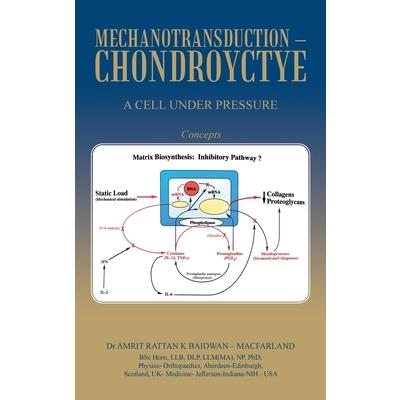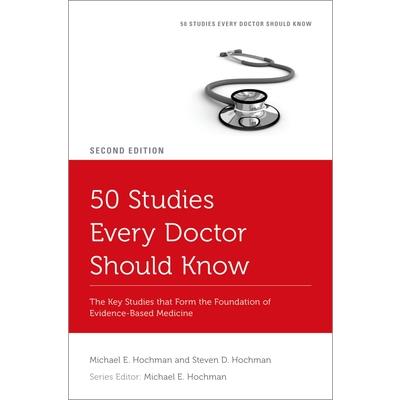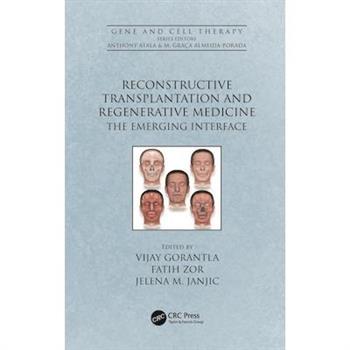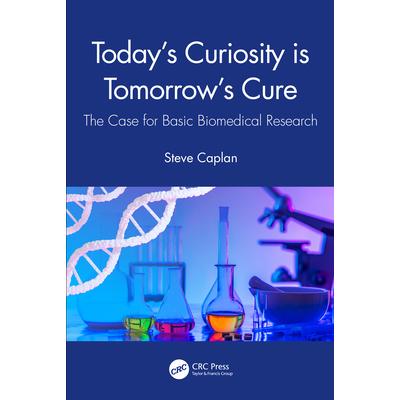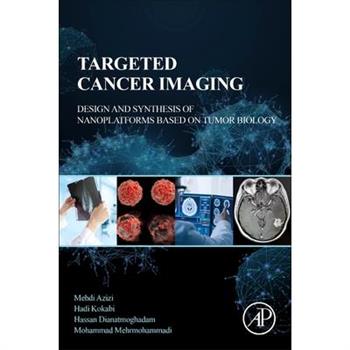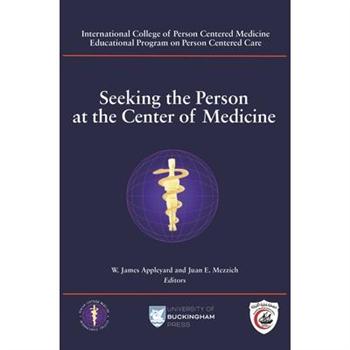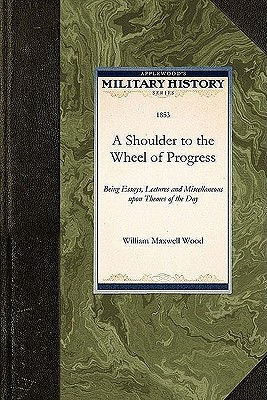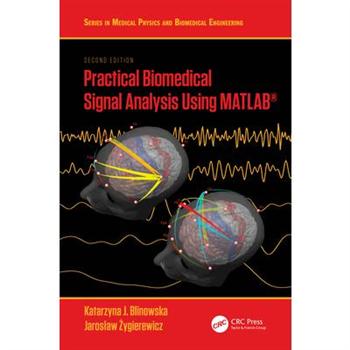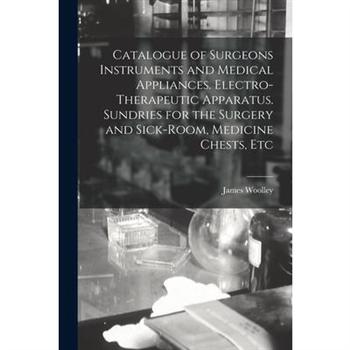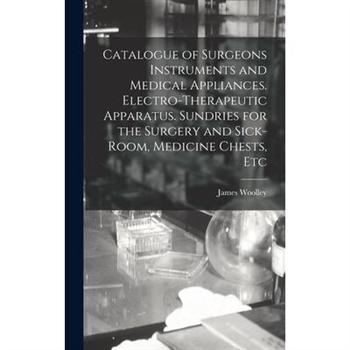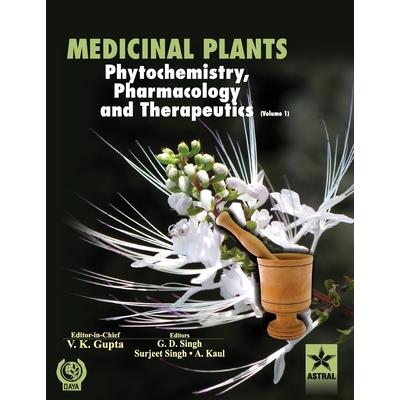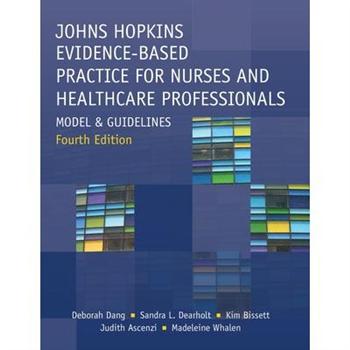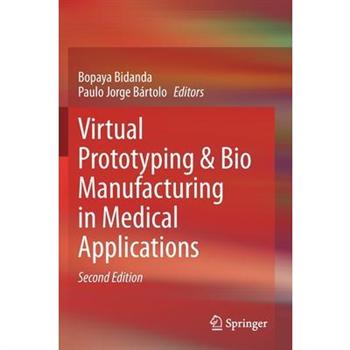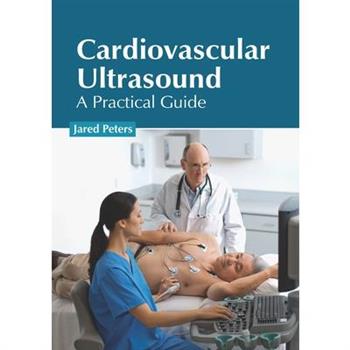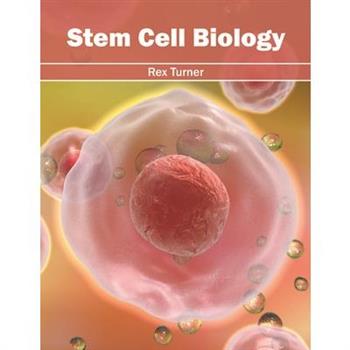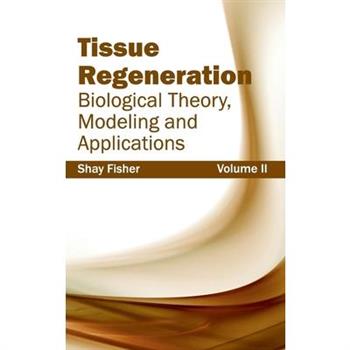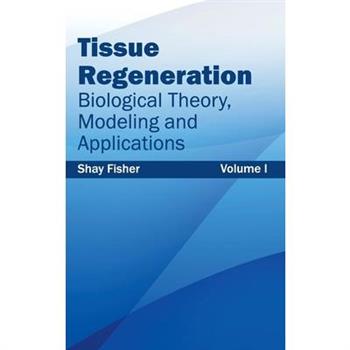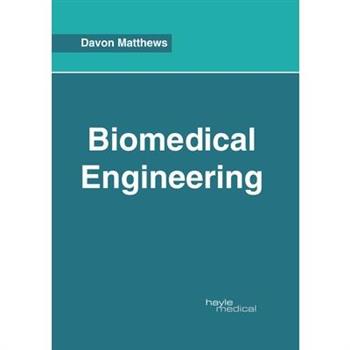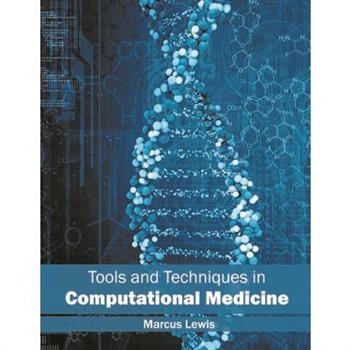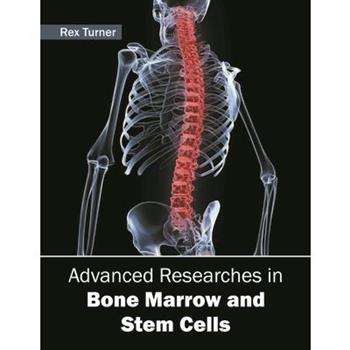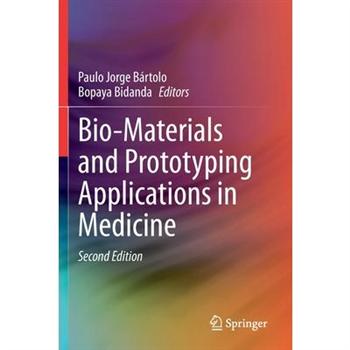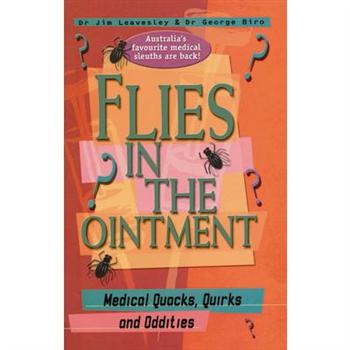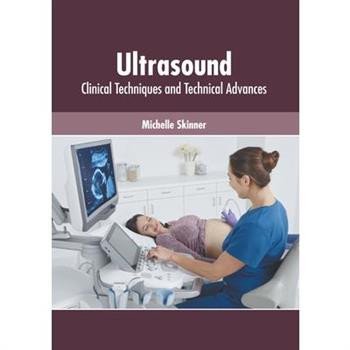Chronobioengineering
This book represents the first in a two-volume set on biological rhythms. This volume focuses on supporting the claim that biological rhythms are universal and essential characteristics of living organisms, critical for proper functioning of any living system. The author begins by examining the potential reasons for the evolution of biological rhythms: (1) the need for complex, goal-oriented devices to control the timing of their activities; (2) the inherent tendency of feedback control systems to oscillate; and (3) the existence of stable and powerful geophysical cycles to which all organisms must adapt. To investigate the second reason, the author enlists the help of biomedical engineering students to develop mathematical models of various biological systems. One such model involves a typical endocrine feedback system. By adjusting various model parameters, it was found that creating a oscillation in any component of the model generated a rhythmic cascade that made the entire systemoscillate. This same approach was used to show how daily light/dark cycles could cascade rhythmic patterns throughout ecosystems and within organisms. Following up on these results, the author discusses how the twin requirements of internal synchronization (precise temporal order necessary for the proper functioning of organisms as complex, goal-oriented devices) and external synchronization (aligning organisms' behavior and physiology with geophysical cycles) supported the evolution of biological clocks. The author then investigates the clock systems that evolved using both conceptual and mathematical models, with the assistance of Dr. Bahrad Sokhansanj, who contributes a chapter on mathematical formulations and models of rhythmic phenomena. With the ubiquity of biological rhythms established, the author suggests a new classification system: the F4LM approach (Function; Frequency; waveForm; Flexibility; Level of biological system expressing rhythms; and Mode of rhythm generation) to investigate biological rhythms. This approach is first used on the more familiar cardiac cycle and then on neural rhythms as exemplified and measured by the electroencephalogram. During the process of investigating neural cycles, the author finds yet another reason for the evolution of biological rhythms: physical constraints, such as those imposed upon long distance neural signaling. In addition, a common theme emerges of a select number of autorhythmic biological oscillators imposing coherent rhythmicity on a larger network or system. During the course of the volume, the author uses a variety of observations, models, experimental results, and arguments to support the original claim of the importance and universality of biological rhythms. In Volume 2, the author will move from the establishment of the critical nature of biological rhythms to how these phenomena may be used to improve human health, well-being, and productivity. In a sense, Volume 1 focuses on the chronobio aspect of chronobioengineering while Volume 2 investigates methods of translating this knowledge into applications, the engineering aspect of chronobioengineering. Table of Contents: Time and Time Again / Walking on Air: An Empirical Proof-of-Concept / Clock Tech, Part 1 / Clock Tech II From External to Internal Timers / Clock Tech III Rise of the CircaRhythms / The Circle Game: Mathematics, Models, and Rhythms / The Power of Circular Reasoning
Basic Feedback Controls in Biomedicine
This textbook is intended for undergraduate students (juniors or seniors) in Biomedical Engineering, with the main goal of helping these students learn about classical control theory and its application in physiological systems. In addition, students should be able to apply the Laboratory Virtual Instrumentation Engineering Workbench (LabVIEW) Controls and Simulation Modules to mammalian physiology. The first four chapters review previous work on differential equations for electrical and mechanical systems. Chapters 5 through 8 present the general types and characteristics of feedback control systems and foot locus, frequency response, and analysis of stability and margins. Chapters 9 through 12 cover basic LabVIEW programming, the control module with its pallets, and the simulation module with its pallets. Chapters 13 through 17 present various physiological models with several LabVIEW control analyses. These chapters cover control of the heart (heart rate, stroke volume, and cardiacoutput), the vestibular system and its role in governing equilibrium and perceived orientation, vestibulo-ocular reflex in stabilizing an image on the surface of the retina during head movement, mechanical control models of human gait (walking movement), and the respiratory control model. The latter chapters (Chapters 13-17) combine details from my class lecture notes in regard to the application of LabVIEW control programming by the class to produce the control virtual instruments and graphical displays (root locus, Bode plots, and Nyquist plot). This textbook was developed in cooperation with National Instruments personnel. Table of Contents: Electrical System Equations / Mechanical Translation Systems / Mechanical Rotational Systems / Thermal Systems and Systems Representation / Characteristics and Types of Feedback Control Systems / Root Locus / Frequency Response Analysis / Stability and Margins / Introduction to LabVIEW / Control Design in LabVIEW / Simulation in LabVIEW / LabVIEW Control Design and Simulation Exercise / Cardiac Control / Vestibular Control System / Vestibulo-Ocular Control System / Gait and Stance Control System / Respiratory Control System
Phonocardiography Signal Processing
The auscultation method is an important diagnostic indicator for hemodynamic anomalies. Heart sound classification and analysis play an important role in the auscultative diagnosis. The term phonocardiography refers to the tracing technique of heart sounds and the recording of cardiac acoustics vibration by means of a microphone-transducer. Therefore, understanding the nature and source of this signal is important to give us a tendency for developing a competent tool for further analysis and processing, in order to enhance and optimize cardiac clinical diagnostic approach. This book gives the reader an inclusive view of the main aspects in phonocardiography signal processing. Table of Contents: Introduction to Phonocardiography Signal Processing / Phonocardiography Acoustics Measurement / PCG Signal Processing Framework / Phonocardiography Wavelets Analysis / Phonocardiography Spectral Analysis / PCG Pattern Classification / Special Application of Phonocardiography / PhonocardiographyAcoustic Imaging and Mapping
Single-Molecule Tools for Bioanalysis
In the last three decades, the fast development of single-molecule techniques has revolutionized the way we observe and understand biological processes. Some of these techniques have been further adapted as tools for bioanalysis. This book summarizes and details the frontiers of the development of these tools as well as their applications. The contributors are young and established researchers in their respective fields. The main content originates from the lecture notes of a chemistry graduate course taught by the book editor at Nanjing University. This book is suitable to be used as a textbook for a high-level undergraduate or an entry-level graduate course. The systematically written content provides a thorough illustration of the mechanisms of each methodology presented.
Implementation Science
This accessible textbook introduces a wide spectrum of ideas, approaches, and examples that make up the emerging field of implementation science, including implementation theory, processes and methods, data collection and analysis, brokering interest on the ground, and sustainable implementation. Containing over 60 concise essays, each addressing the thorny problem of how we can make care more evidence-informed, this book looks at how implementation science should be defined, how it can be conducted, and how it is assessed. It offers vital insight into how research findings that are derived from healthcare contexts can help make sense of service delivery and patient encounters. Each entry concentrates on an important concept and examines the idea's evidence base, root causes and effects, ideas and applications, and methodologies and methods. Revealing a very human side to caregiving, but also tackling its more complex and technological aspects, the contributors draw on real-life healthcare examples to look both at why things go right in introducing a new intervention and at what can go wrong. Implementation Science: The Key Concepts provides a toolbox of rich, contemporary thought from leading international thinkers, clearly and succinctly delivered. This comprehensive and enlightening range of ideas and examples brought together in one place is essential reading for all students, researchers, and practitioners with an interest in translating knowledge into practice in healthcare.
An Introduction to Clinical Research for Health and Social Care Professionals
With the increasing emphasis on evidence-based practice, there is a need for all health and social care professionals to understand the principles of general and clinical research. In the United Kingdom and several other countries, this had led to a proliferation of advanced programs, including for those seeking doctorate degrees. In this book, the editors introduce readers to the principles and practice of clinical research. Eighteen chapters and three appendices provide guidance on the different stages of a research project, from inception to the dissemination of results. Topics include: - steps to engage in practice-based research; - ethical questions surrounding research; - sources of funding; - collecting and collating data. Contributing authors emphasize the need to critically appraise literature before carrying out a research project. They also explain the stages of a research project and share insights on where to go for more information. The book includes an index, a glossary, and charts and figures to promote learning. Discussion questions reinforce critical material.
Understanding Statistics in Medicine
"Understanding Statistics in Medicine" is a companion volume to Tom and Michelle's "How to Report Statistics in Medicine," which is a comprehensive set of guidelines for documenting research and statistical methods in the medical literature. Understanding Statistics reflects Tom and Donna's separate experience in teaching the topics for many years, as well as the course on statistical reporting they teach on the University of Chicago's Medical Writing and Editing Program. Understanding statistics explains in more detail the reasoning behind the guidelines in How to Report Statistics.
Nanopharmaceuticals in Regenerative Medicine
The book Nanopharmaceuticals in regenerative medicine is a collective and comprehensive volume of the latest innovations in nanoscience technology for practical use in clinical, biomedicine and diagnostic arena. The term nanotechnology pops up in every segment of modern-day life. The primary aim of this book is to deliver the precise information to students, educators, technologists and researchers. A conglomerate of scientists from various research fields contributed to the chapters, giving detailed descriptions on the most recent developments of nanotechnology in the area of disease management. This book will also be useful for industrial research and development partners, start-up entrepreneurs, government policy makers and other professionals who are interested in nanomedicines.
War or Health
This major new reader has been put together by Physicians for Social Responsibility in Finland, a member of IPPNW, the International Physicians for the Prevention of Nuclear War, the recipient of the Nobel Prize in 1985. Comprising 70 articles, specially commissioned for this volume and written by leading authorities in their field, it provides an unusually wide-ranging examination of the interface between warfare and human health and society.In a world where the post-cold war era has proved a profound disappointment as regards any diminution in the incidence of armed conflict, this up-to-date and comprehensive source book will prove invaluable to health professionals and social scientists as well as those active in human rights, peace and development.
Declarative Mapping Sentences in Qualitative Research
In this book, Hackett introduces the traditional usage of the mapping sentence within quantitative research, reviews its philosophical underpinnings, and proposes the "declarative mapping sentence" as an instrument and approach to qualitative scholarship. With a helpful glossary and a range of illustrative tables, Hackett takes the reader through a straightforward introduction to mapping sentences and their construction, before discussing declarative mapping sentences and possible future research directions. This innovative direction for social research provides a flexible structure for research domain, and it allows qualitative research results to be uniformly sorted. Declarative Mapping Sentences in Qualitative Research will be essential reading for researchers, academics, and postgraduate students in the fields of qualitative psychology and psychological methods, as well as philosophical psychology and social science research methods.
Biotechnology
This Book Is Intended To Expose Students Of Life Sciences To Biotechnology, A Vibrant And Ever-Evolving Discipline. You Will Gain Knowledge Of Methodologies And Tools Used In This Field. Read, Enjoy And Learn As This Book Walk You Through The Fundamentals Of Biotechnology And Equips You With Many Of The Necessary Skills To Excel In This Field. In This Book, You Will: What Is Biotechnology?Biotechnology LawPatent Law- GeneralBiotech Invention- Meaning & OverviewInvention Or Discovery?Factors That May Indicate InventionDoes Biotechnology Invention Need Patent Protection? The Book Gives General Ideas About Biotechnology, Describes Its Main Objects, Outlines The Basics Of Cellular, Tissue And Genetic Engineering, Cryopreservation. The Part Includes The Basics Of Industrial Biotechnology, Enzymatic Engineering, Environmental Biotechnology, Nanobiotechnology The Book will be extremely useful for all students studying Biotechnology at Graduate or Post Graduate level.
The Room At The End Of The Universe
A collection of fascinating and unforgettable true stories of patients struggling with life-threatening neurological diseases. Told with empathy, neurologist Dr. Adamo conveys the lessons we can all learn when dealing with adversity and tragedy. These dramatic accounts show us how both courage and compassion are inherent in the human condition.
Prehospital Research Methods and Practice
Bringing together a team of leading international experts in the field of research, this book provides an up-to-date and accessible overview of applied research methods in the prehospital environment.Written to support the needs of the paramedicine, emergency medicine and wider healthcare communities in this rapidly advancing research setting, the authors introduce the key areas of research design and methods, evidence-based practice, ethics and quality improvement for both the novice and the more advanced researcher. Relevant examples of prehospital research are also included to fully explain and illustrate the key approaches.High-quality, robust evidence is of the utmost importance to inform prehospital clinical practice and ensure better patient care. This book is essential reading for anyone interested in undertaking research within the prehospital or emergency care setting, including undergraduate and postgraduate students in paramedic science, medicine, nursing and allied health.
Environmental Management Technologies
Environmental Management Technologies: Challenges and Opportunities details the environmental problems posed by the various types of toxic organic and inorganic pollutants discharged from both natural and anthropogenic activities and their toxicological effects in environments, humans, animals, and plants. This book also highlights the recent advanced and innovative methods for the effective degradation and bioremediation of organic pollutants, heavy metals, dyes, etc. from the environment for sustainable development. Features of the book: - Provides state-of-the-art information on pollutants, their sources, and deleterious impacts on the environment - Elucidates the recent updates on Emerging Pollutants (EPs) in pharmaceutical waste and personal care products - Discusses the various physico-chemical, biological, and combination treatment systems for sustainable development - Details recent research findings in the area of environmental waste management and their future challenges and opportunities
Monoclonal Antibodies and Their Functional Fragments in Research, Diagnosis and Therapy
This book is a compendium of scientific articles submitted to a Special Issue of International Journal of Molecular Sciences, fostered by MDPI and curated by Dr. Annamaria Sandomenico and Dr. Menotti Ruvo from the Institute of Biostructure and Bioimaging of the National Research Council. All articles underwent a rigorous peer review and were selected to highlight the properties that make monoclonal antibodies and their functional fragments some of the most useful and versatile assets in therapy and diagnosis.
Tomorrow’s Healthcare by Nano-Sized Approaches
Nanomedicine, a scientific branch of nanotechnology that operates on the same scale as biology, offers the possibility of influencing the healing process from inside of the body by manipulating the matter at cellular or molecular levels. Throughout this book, current healing approaches based on this revolutionary new technology are summarized from a scientific assessment. The aim of the authors is to give, through select examples, a deep insight to nanotechnology status and the great progress that its rigorous application will bring to human health. The authors' commitment is to broaden the vision of health professionals who will eventually be the future users of this knowledge.
Quantitative Bioimaging
Quantitative bioimaging is a broad interdisciplinary field that exploits tools from biology, chemistry, optics, and statistical data analysis for the design and implementation of investigations of biological processes. Instead of adopting the traditional approach of focusing on just one of the component disciplines, this textbook provides a unique introduction to quantitative bioimaging that presents all of the disciplines in an integrated manner. The wide range of topics covered include basic concepts in molecular and cellular biology, relevant aspects of antibody technology, instrumentation and experimental design in fluorescence microscopy, introductory geometrical optics and diffraction theory, and parameter estimation and information theory for the analysis of stochastic data. Key Features: Comprises four parts, the first of which provides an overview of the topics that are developed from fundamental principles to more advanced levels in the other parts. Presents in the second part an in-depth introduction to the relevant background in molecular and cellular biology and in physical chemistry, which should be particularly useful for students without a formal background in these subjects. Provides in the third part a detailed treatment of microscopy techniques and optics, again starting from basic principles. Introduces in the fourth part modern statistical approaches to the determination of parameters of interest from microscopy data, in particular data generated by single molecule microscopy experiments. Uses two topics related to protein trafficking (transferrin trafficking and FcRn-mediated antibody trafficking) throughout the text to motivate and illustrate microscopy techniques. An online appendix providing the background and derivations for various mathematical results presented or used in the text is available at http: //www.routledge.com/9781138598980.
Keywords in Queer Sinophone Studies
This volume showcases a vibrant wave of scholarship that explores the intersection of queer theory and Sinophone studies, consolidating an interdisciplinary framework for furthering transnational research into non-conforming genders, sexualities and bodies. Engaging with contemporary debates and controversies, Keywords in Queer Sinophone Studies presents a definitive collection of original contributions, which are both theoretically and empirically grounded and cross-disciplinary in nature. Individual chapters offer an in-depth study of new empirical data and case studies, covering keywords such as transpacific, viscerality, fandom, postcoloniality, ethnicity and activism. Imagining new conversations across several fields, including literature, film, communication, ethnic studies, anthropology, history, sociology and politics, this book will appeal to students and scholars of Queer Studies and Asian culture, literature and film, as well as gender and sexuality.
Stochastic Modeling for Medical Image Analysis
Stochastic Modeling for Medical Image Analysis provides a brief introduction to medical imaging, stochastic modeling, and model-guided image analysis.Today, image-guided computer-assisted diagnostics (CAD) faces two basic challenging problems. The first is the computationally feasible and accurate modeling of images from different modalities to obtain clinically useful information. The second is the accurate and fast inferring of meaningful and clinically valid CAD decisions and/or predictions on the basis of model-guided image analysis.To help address this, this book details original stochastic appearance and shape models with computationally feasible and efficient learning techniques for improving the performance of object detection, segmentation, alignment, and analysis in a number of important CAD applications.The book demonstrates accurate descriptions of visual appearances and shapes of the goal objects and their background to help solve a number of important and challenging CAD problems. The models focus on the first-order marginals of pixel/voxel-wise signals and second- or higher-order Markov-Gibbs random fields of these signals and/or labels of regions supporting the goal objects in the lattice. This valuable resource presents the latest state of the art in stochastic modeling for medical image analysis while incorporating fully tested experimental results throughout.
Biomedical Engineering
Several developed countries are facing serious problems in medical environments owing to the aging society, and extension of healthy lifetime has become a big challenge. Biomedical engineering, in addition to life sciences and medicine, can help tackle these problems. Innovative technologies concerning minimally invasive treatment, prognosis and early diagnosis, point-of-care testing, regenerative medicine, and personalized medicine need to be developed to realize a healthy aging society.This book presents cutting-edge research in biomedical engineering from materials, devices, imaging, and information perspectives. The contributors are senior members of the Research Center for Biomedical Engineering, supported by the Ministry of Education, Culture, Sports, Science and Technology, Japan. All chapters are results of collaborative research in engineering and life sciences and cover nanotechnology, materials, optical sensing technology, imaging technology, image processing technology, and biomechanics, all of which are important areas in biomedical engineering. The book will be a useful resource for researchers, students, and readers who are interested in biomedical engineering.
Mechanotransduction - Chondroyctye
A seminal and novel finding in a scientific study of Dr Amrit Rattan K Baidwan MacFarland (Amrit K Macfarland), as Senior Scientist/ Molecular Geneticist, resulted in the discovery of key signalling pathways in chondrocytes (cartilage explants) in response to cyclic and static loading of connective tissues. The work was presented as a first proof in multiple peer reviewed international conferences, in the United Kingdom, United States, most of Europe, Asia, and the Middle East. The pre-requisite for planning new and novel research experiments and coping with future trends in science is a thorough analysis of the present state of knowledge and in finding new ways of thinking and planning. On this basis, new research hypotheses and strategies will have to be built. This book aims to present a short review of key concepts around Dr MacFarland's research experiments on signal transduction in diverse systems, such as cancer blood brain barrier studies, coronary heart disease, mechanotranduction mechanisms in connective tissues mainly articular cartilage and meniscus with special attention paid to the reactions of these two tissues, as responses in vitro loading model regimens. The current interest in loading stems from how little we know of the aetiology of osteoarthritis a degenerative joint disease, the most crippling of musculoskeletal disorder and diseases. Signal transduction mechanisms are also examined in endothelial and smooth muscle and the role of cholesterol ester transfer protein in coronary heart disease. The object of Dr MacFarland's scientific and medical research in signal transduction is ambitious, as both scientific research leading to therapeutic remedies needed high ideals setting goals; to give novel relevant results as was the case of the discovery of the first signalling molecule in her research in a unique biological system, as well as the response of connective tissue cells to mechanical stimulus. Therefore, far off as it may be, the prevention of diseases must be the ultimate objective and the overwhelming character of the problems, compels scientists in specific in the age of nano technology to seek cures and create the means of prevention of the disease. Aspects of her studies show the relevance in high impact sports injuries and daily working conditions, whether they degrade or maintain the health of joints in general, and benefit or harm joints and health. AUTHORHOUSE - ACADEMIC PRESS
Mechanotransduction - Chondroyctye
A seminal and novel finding in a scientific study of Dr Amrit Rattan K Baidwan MacFarland (Amrit K Macfarland), as Senior Scientist/ Molecular Geneticist, resulted in the discovery of key signalling pathways in chondrocytes (cartilage explants) in response to cyclic and static loading of connective tissues. The work was presented as a first proof in multiple peer reviewed international conferences, in the United Kingdom, United States, most of Europe, Asia, and the Middle East. The pre-requisite for planning new and novel research experiments and coping with future trends in science is a thorough analysis of the present state of knowledge and in finding new ways of thinking and planning. On this basis, new research hypotheses and strategies will have to be built. This book aims to present a short review of key concepts around Dr MacFarland's research experiments on signal transduction in diverse systems, such as cancer blood brain barrier studies, coronary heart disease, mechanotranduction mechanisms in connective tissues mainly articular cartilage and meniscus with special attention paid to the reactions of these two tissues, as responses in vitro loading model regimens. The current interest in loading stems from how little we know of the aetiology of osteoarthritis a degenerative joint disease, the most crippling of musculoskeletal disorder and diseases. Signal transduction mechanisms are also examined in endothelial and smooth muscle and the role of cholesterol ester transfer protein in coronary heart disease. The object of Dr MacFarland's scientific and medical research in signal transduction is ambitious, as both scientific research leading to therapeutic remedies needed high ideals setting goals; to give novel relevant results as was the case of the discovery of the first signalling molecule in her research in a unique biological system, as well as the response of connective tissue cells to mechanical stimulus. Therefore, far off as it may be, the prevention of diseases must be the ultimate objective and the overwhelming character of the problems, compels scientists in specific in the age of nano technology to seek cures and create the means of prevention of the disease. Aspects of her studies show the relevance in high impact sports injuries and daily working conditions, whether they degrade or maintain the health of joints in general, and benefit or harm joints and health. AUTHORHOUSE - ACADEMIC PRESS
50 Studies Every Doctor Should Know
The inaugural volume of the 50 Studies series, 50 Studies Every Doctor Should Know presents key studies that have shaped the practice of medicine. Selected using a rigorous methodology, the studies cover topics ranging from dieting to cardiovascular disease, insomnia to obstetrics. For each study, a concise summary is presented with an emphasis on the results and limitations of the study, and its implications for practice. Brief information on other relevant studies is provided, and an illustrative clinical case concludes each review. A section of review questions and answers is included at the back of the book to ensure that readers take away the key messages from each study. For this new edition, the contents were reorganized to include ten new studies, and the references, guidelines, and implications of existing studies were thoroughly updated. This book is a must-read for health care professionals and anyone who wants to learn more about the data behind clinical practice.
Reconstructive Transplantation and Regenerative Medicine
This book summarizes rapid progress and innovation in transplantation and regenerative medicine - the merger of reconstructive plastic surgery and transplantation - called Vascularized Composite Allotransplantation. This merger includes face, hand, uteri, larynx, tongue, penis and trachea translplantations as well as other body part transplants using grafts derived from organ donors. These sorts of transplants are now performed more commonly. Cell therapies for immunomodulation are surrogates for immune responses after transplantation to non-invasive imaging of neuroregeneration for improving functional outcomes after transplant.
Today’s Curiosity Is Tomorrow’s Cure
Basic curiosity-driven biomedical science has delivered many of today's most significant medical advances. This book provides clearly explained examples from recent biomedical history and includes convincing arguments for sustaining a robust portfolio of basic research. Intended as an engaging read, which will delight undergraduate and graduate students, as well as scientific researchers, it is full-throated advocacy of basic science. Illustrations and examples include the discoveries of penicillin and insulin, and the breakthrough elucidation of the genetic code. Providing both compelling rationale in support of basic science, and a fascinating look through the history of modern biomedical research, this book highlights with stirring examples why basic biomedical research is so important, and how so many key advances in medicine are derived from basic research. The book also offers a rationale for scientific inquiry and a broader understanding of the history of modern biomedical research missing from today's classrooms. Key Features 1) Provides clear explanations of great scientific discoveries 2) Illustrates connections between basic research findings and modern medicine 3) Includes compelling graphics/diagrams/illustrations 4) Accessible to the general public 5) Offers background for more specialized readers, including researchers as well as those with advanced degrees. Related Titles Staddon, J. Scientific Method: How Science Works, Fails to Work, and Pretends to Work (ISBN 978-1-1382-9536-0) Helliwell, J. R. Skills for Scientific Life (ISBN 978-1-4987-6875-7) MacRitchie, F. Scientific Research as a Career (ISBN 978-1-4398-6965-9)
Targeted Cancer Imaging
Targeted Cancer Imaging: Design and Synthesis of Nanoplatforms based on Tumour Biology reviews and categorizes imaging and targeting approaches according to cancer type, highlighting new and safe approaches that involve membrane-coated nanoparticles, tumor cell-derived extracellular vesicles, circulating tumor cells, cell-free DNAs, and cancer stem cells, all with the goal of pointing the way to developing precise targeting and multifunctional nanotechnology-based imaging probes in the future. This book is highly multidisciplinary, bridging the knowledge gap between tumor biology, nanotechnology, and diagnostic imaging, and thus making it suitable for researchers ranging from oncology to bioengineering. Although considerable efforts have been conducted to diagnose, improve and treat cancer in the past few decades, existing therapeutic options are insufficient, as mortality and morbidity rates remain high. One of the best hopes for substantial improvement lies in early detection. Recent advances in nanotechnology are expected to increase our current understanding of tumor biology, allowing nanomaterials to be used for targeting and imaging both in vitro and in vivo experimental models.
A Book About Doctors
The book "" A Book About Doctors, has been considered important throughout the human history, and so that this work is never forgotten we have made efforts in its preservation by republishing this book in a modern format for present and future generations. This whole book has been reformatted, retyped and designed. These books are not made of scanned copies and hence the text is clear and readable.
Seeking the Person at the Center of Medicine
It has become clear that reductionist models of health care are unsustainable in both economic and humanistic terms. There is a pressing need, therefore, articulated increasingly by patients themselves, to move away from impersonal, fragmented and decontextualized systems of healthcare towards personalized, integrated and contextualised models of clinical practice within a humanistic framework of care that recognizes the importance of applying science in a manner which respects the patient as a whole person and takes full account of his values, preferences, aspirations stories, cultural context, fears, worries and hopes and which thus recognizes and responds to his emotional, social and spiritual necessities in addition to his physical needs.The Educational Program for Person-centered Care aims to achieve this. It is divided into three discrete but interrelated sections. The first section of four papers includes the conceptualization and measurement in person centered medicine and embraces the relevance of the social determinants of health and people centered public health. The second group of articles moves on to the practical aspects of patient-physician communication and the importance of a comprehensive diagnosis. The third section emphasizes the importance of shared decision making with key examples and inter-professional collaboration. The program is a living document and will be revised with the help of those who study and apply a person-centered approach to their own practice.
A Shoulder to the Wheel of Progress
This work has been selected by scholars as being culturally important, and is part of the knowledge base of civilization as we know it. This work was reproduced from the original artifact, and remains as true to the original work as possible. Therefore, you will see the original copyright references, library stamps (as most of these works have been housed in our most important libraries around the world), and other notations in the work.This work is in the public domain in the United States of America, and possibly other nations. Within the United States, you may freely copy and distribute this work, as no entity (individual or corporate) has a copyright on the body of the work.As a reproduction of a historical artifact, this work may contain missing or blurred pages, poor pictures, errant marks, etc. Scholars believe, and we concur, that this work is important enough to be preserved, reproduced, and made generally available to the public. We appreciate your support of the preservation process, and thank you for being an important part of keeping this knowledge alive and relevant.
Practical Biomedical Signal Analysis Using Matlab(r)
Covering the latest cutting-edge techniques in biomedical signal processing while presenting a coherent treatment of various signal processing methods and applications, this second edition of Practical Biomedical Signal Analysis Using MATLAB(R) also offers practical guidance on which procedures are appropriate for a given task and different types of data.It begins by describing signal analysis techniques--including the newest and most advanced methods in the field--in an easy and accessible way, illustrating them with Live Script demos. MATLAB(R) routines are listed when available, and freely available software is discussed where appropriate. The book concludes by exploring the applications of the methods to a broad range of biomedical signals while highlighting common problems encountered in practice.These chapters have been updated throughout and include new sections on multiple channel analysis and connectivity measures, phase-amplitude analysis, functional near-infrared spectroscopy, fMRI (BOLD) signals, wearable devices, multimodal signal analysis, and brain-computer interfaces.By providing a unified overview of the field, this book explains how to integrate signal processing techniques in biomedical applications properly and explores how to avoid misinterpretations and pitfalls. It helps readers to choose the appropriate method as well as design their own methods. It will be an excellent guide for graduate students studying biomedical engineering and practicing researchers in the field of biomedical signal analysis.Features: Fully updated throughout with new achievements, technologies, and methods and is supported with over 40 original MATLAB Live Scripts illustrating the discussed techniques, suitable for self-learning or as a supplement to college courses Provides a practical comparison of the advantages and disadvantages of different approaches in the context of various applications Applies the methods to a variety of signals, including electric, magnetic, acoustic, and optical Katarzyna J. Blinowska is a Professor emeritus at the University of Warsaw, Poland, where she was director of Graduate Studies in Biomedical Physics and head of the Department of Biomedical Physics. Currently, she is employed at the Institute of Biocybernetics and Biomedical Engineering of the Polish Academy of Sciences. She has been at the forefront in developing new advanced time-series methods for research and clinical applications.Jaroslaw Żygierewicz is a Professor at the University of Warsaw, Poland. His research focuses on developing methods for analyzing EEG and MEG signals, brain-computer interfaces, and applications of machine learning in signal processing and classification.
Catalogue of Surgeons Instruments and Medical Appliances. Electro-therapeutic Apparatus. Sundries for the Surgery and Sick-room, Medicine Chests, Etc
This work has been selected by scholars as being culturally important and is part of the knowledge base of civilization as we know it.This work is in the public domain in the United States of America, and possibly other nations. Within the United States, you may freely copy and distribute this work, as no entity (individual or corporate) has a copyright on the body of the work.Scholars believe, and we concur, that this work is important enough to be preserved, reproduced, and made generally available to the public. To ensure a quality reading experience, this work has been proofread and republished using a format that seamlessly blends the original graphical elements with text in an easy-to-read typeface.We appreciate your support of the preservation process, and thank you for being an important part of keeping this knowledge alive and relevant.
Catalogue of Surgeons Instruments and Medical Appliances. Electro-therapeutic Apparatus. Sundries for the Surgery and Sick-room, Medicine Chests, Etc
This work has been selected by scholars as being culturally important and is part of the knowledge base of civilization as we know it.This work is in the public domain in the United States of America, and possibly other nations. Within the United States, you may freely copy and distribute this work, as no entity (individual or corporate) has a copyright on the body of the work.Scholars believe, and we concur, that this work is important enough to be preserved, reproduced, and made generally available to the public. To ensure a quality reading experience, this work has been proofread and republished using a format that seamlessly blends the original graphical elements with text in an easy-to-read typeface.We appreciate your support of the preservation process, and thank you for being an important part of keeping this knowledge alive and relevant.
Medicinal Plants
Ancient civilization greatly depended on local flora and fauna for their survival and experimented with various berries, roots, leaves, minerals or animal parts to find out what effects they had and as a result, many crude drugs were observed by the local healer to have some medical use. As understanding of therapeutic benefits deepens and demands for natural products increased, previously serendipitous discoveries evolved into active searches for new medicines. At present 25 per cent of the modern medicines are developed from plants that were first used traditionally, and many synthetic drugs have also been obtained from natural precursors. The present volume of the book series, "Medicinal Plants: Phytochemistry, Pharmacology and Therapeutics" contained as many as 29 review/ research articles contributed by the eminent scientists from across the world, some of which are as under: v Resveratrol: A Natural Polyphenol v Phytochemistry, Pharmacology and Therapeutic Uses of Wrightia tinctoria v Genotoxicity, its Methods of Evaluation and the Significance v Vasodilatory Activity Induced by Natural Products v Scope of Chicory with Special Reference to its Medicinal Value v Role of Curcuminoids, in Disease Prevention and Health Maintenance v Multi-Targeted Approaches for Polygenic Disorders Using Medicinal Plants v Safety Assessment of Orthosiphon stamineus Benth v Plants having Potential in the Management of Hyperlipidemia v Phytochemistry and Pharmacology of Alangium Sp. v In vitro Antisickling Activity of Anthocyanins Extracts from Morinda lucida v Antioxidant and Antihypertensive Investigation of Parinari curatellifolia v Clinical Evaluation of Anacardium occidentale v Effect of Emblica officinalis Diet in Streptozotocin Diabetic Mice The present volume, with its balanced approach will be a valuable, and an important research manual, that will stimulate interest and satisfy the need for further knowledge of this rapidly expanding and exciting discipline.
Johns Hopkins Evidence-Based Practice for Nurses and Healthcare Professionals, Fourth Edition
Awarded third place in the 2021 AJN Book of the Year Awards in Professional Development!The dynamic and competitive US healthcare environment requires healthcare professionals who are accountable to provide efficient and effective care. New evidence is continually surfacing in nursing and medical environments. Consumer pressure and increased patient expectations place an even greater emphasis on the need for healthcare professionals to deliver true evidence-based care in their daily practice.Johns Hopkins Nursing is steadfastly dedicated to making it easy for frontline nurses, health professionals, and students to use best evidence in their everyday practice. With each edition, we revise based on the honest, frank, and generous feedback we receive from frontline users of the Johns Hopkins Evidence-Based Practice Model from across the globe. In this fourth edition, we are excited to be able to share these changes. The 2021 revised JHEBP Model underscores the need for organizations to cultivate both a spirit of inquiry and an environment of learning that encourages questioning and seeking best evidence and its implementation and adoption in practice. Although our model was developed, tested, and implemented by and for nurses, we have had numerous requests and feedback from other health professionals to use the Hopkins model. Thus, we introduce the fourth edition with a new title-Johns Hopkins Evidence-Based Practice for Nurses and Healthcare Professionals. This change reflects the growing evidence base of the importance for interprofessional collaboration and teamwork, particularly when addressing complex care issues such as those often tackled by EBP teams. In this edition, our overarching aim is to provide practical and pragmatic explanations, approaches, and tools to guide and support teams engaging in EBP projects: We explicitly reflected the interprofessional nature of the EBP process and its use by all disciplines who serve, interact with, and care for those who seek services.We revised the flow of the book chapters across the sections to reflect the progression of steps in the EBP process.We included a new introduction for the evidence section that includes background on the use of evidence hierarchies, tips for differentiating research from quality improvement, and further explanation of the summary and synthesis steps in the evidence process.We provided real-world examples for how to complete all tools using feedback from our global users as well as tried and tested helpful hints.We added a new chapter to expand and amplify strategies for dissemination that includes how to create a dissemination plan, audience-specific recommendations for internal and external dissemination venues, details of the pros and cons of different types of dissemination, guidance on submitting manuscripts for publication, and an overview of the journal review process.Chapter-specific enhancements: Chapter 3: Defines critical thinking and clinical reasoning and differentiates their use in the PET process.Chapter 4: Outlines stakeholder selection criteria and an algorithm to determine the need for an EBP project.Chapter 5: Includes new information on the literature screening process to navigate a large number of results Chapter 6: Provides useful clarifications of research approaches, designs, and methods with a focus on frontline staff as the target audienceChapter 8: Includes revised synthesis and translation steps; assesses risk prior to translation; prioritizes translation models accessible to frontline staff with a focus on the QI methodology and PDSA; and describes an expanded list of outcome measures to determine the success of an EPB project.
Virtual Prototyping & Bio Manufacturing in Medical Applications
Brings together all of the important aspects of virtual and rapid prototyping relative to medical applications in a cohesive mannerProvides a comprehensive overview of virtual prototyping and rapid prototyping techniquesCovers applications of rapid prototyping in detail including the dental, cardiovascular and biomaterial areas
Cardiovascular Ultrasound: A Practical Guide
An echocardiogram or a cardiovascular ultrasound is a sonogram of the heart that is developed using 2D, 3D and Doppler ultrasound. Echocardiography is one of the most popular diagnostic tests used in cardiology for the management, diagnosis and follow-up care of patients ailing from any known or suspected heart condition. It provides useful information pertaining to the shape and size of the heart, its pumping capacity, and the positioning and extent of tissue damage, if any. An echocardiogram also offers estimates of the cardiac output, diastolic function and ejection fraction. The most significant advantage of echocardiography is its non-invasiveness and lack of side effects. Some of the common types of echocardiogram are transthoracic echocardiogram, stress echocardiogram and transesophageal echocardiogram, besides others. 3D echocardiography is also possible by using a matrix array of ultrasound probes and processing system. This book is a valuable compilation of topics, ranging from the basic to the most complex advancements in cardiovascular ultrasonography. From theories to research to practical applications, case studies related to all contemporary topics of relevance in this field have been included herein. It will prove to be immensely beneficial to students and researchers working in this field.
Stem Cell Biology
This book provides comprehensive insights into the field of stem cell biology. Stem cells refer to the undifferentiated biological cells that can divide themselves through mitosis to form more stem cells. These cells are generally seen in multicellular organisms and are of two types, namely, embryonic stem cells and adult stem cells. They are found in embryos, fetuses and some adult tissues. This book unravels the recent studies in the field of stem cells. It will also provide interesting topics for research which readers can take up. From theories to research to practical applications, case studies from across the globe related to stem cell biology, have been included in this book. Students, scientists, biologists, doctors and other interested readers will benefit alike from this text.
Tissue Regeneration: Biological Theory, Modeling and Applications (Volume II)
In a majority of incidents involving damage or injuries, the healing process involves formation of a scar, which is like a patch, reinstating structural integrity of the damaged tissue without reviving physiological functions. A far better option for a patient affected by tissue damage would be to replace the damaged tissue with something functionally similar. Increasing amount of study and research is being undertaken across the world in search for such a technology. This book provides a timely overview on crucial topics in tissue regeneration, in a well-researched manner, written by experts from around the globe. It facilitates better understanding of the application of stem cells, uses of scaffolds and modelling and evaluation of regeneration. This book will be a great source of reference for study and work undertaken by students, experts and medical professionals.
Tissue Regeneration: Biological Theory, Modeling and Applications (Volume I)
In a majority of incidents involving damage or injuries, the healing process involves formation of a scar, which is like a patch, reinstating structural integrity of the damaged tissue without reviving physiological functions. A far better option for a patient affected by tissue damage would be to replace the damaged tissue with something functionally similar. Increasing amount of study and research is being undertaken across the world in search for such a technology. This book provides a timely overview on crucial topics in tissue regeneration, in a well-researched manner, written by experts from around the globe. It facilitates a better understanding of normal healing and the methods of applying stem cells. This book will be a great source of reference for study and work undertaken by students, experts and medical professionals.
Biomedical Engineering
The field concerned with the application of engineering for advancements in medicine and biology is known as biomedical engineering. It strives to develop solutions for healthcare issues so as to improve therapy, monitoring and diagnosis. It also involves equipment maintenance, testing, disposal and decommissioning. Prominent applications of biomedical engineering are the development of biocompatible prostheses, regenerative tissue growth, therapeutic and diagnostic medical devices, imaging technologies such as MRIs and ECGs, etc. This textbook is a compilation of chapters that discuss the most vital concepts in the field of biomedical engineering. Different approaches, evaluations and methodologies have been included herein. Coherent flow of topics, student-friendly language and extensive use of examples make this book an invaluable source of knowledge.
Tissue Engineering and Regenerative Medicine
Tissue engineering is a branch of medicine that is majorly dependent on biomaterials. It combines material methods, cells, and biologically active molecules to form functionally active tissues. Regenerative medicine is a branch of tissue engineering which is based on the concept of self-healing with the help of some biological materials to rebuild and recreate tissues and organs. This book provides significant information of this discipline to help develop a good understanding of the core concepts and related aspects of these subjects. As these fields are emerging at a rapid pace, the contents of this book will help the readers get a better understanding of the modern concepts and applications of these subjects.
Tools and Techniques in Computational Medicine
Computational medicine is a rapidly growing field of medical science. It refers to the practice of using computer systems and software to diagnose different fatal diseases and to find how they are caused and the effects they have on human beings. It helps to study chronic diseases like cancer, heart ailments, etc. The aim of computational medicine is to study the growth of diseases in the human body and how it slowly kills the cells, tissues and other organs of our body. This book will bring forth some of the most innovative concepts and elucidate the new advances made in this area. It presents the complex subject of computational medicine in the most comprehensible format. It will serve as a reference guide to a broad spectrum of readers like students, doctors, experts, physicians, scientists, etc.
Advanced Researches in Bone Marrow and Stem Cells
Bone marrow located in the heads of long bones can be termed as a manufacturing center of red blood cells and lymphocytes as it produces billions of cells per day depending upon the requirement of the body. Bone marrow transplant is regarded as one of the most popular methods for treating blood cancer. Stem cells are generally found in embryos. These cells have a remarkable tendency to transform themselves into different body cells with the help of stem cell engineering techniques. Due to their regenerative potential they have the capability to treat diseases like heart problems, diabetes, etc. This book presents the complex subjects of bone marrow and stem cell research in the most comprehensible and easy to understand language. It attempts to understand the multiple branches that fall under the discipline of bone marrow and stem cells, and how such concepts have practical applications. The various studies that are constantly contributing towards the evolution of these fields are examined in detail. It will help the readers in keeping pace with the rapid changes in this field.
Bio-Materials and Prototyping Applications in Medicine
Rapid prototyping is used to design and develop medical devices and instrumentation. This book details research in rapid prototyping of bio-materials for medical applications. It provides a wide variety of examples of medical applications using rapid prototyping, including tissue engineering, dental applications, and bone replacement. Coverage also discusses the emergence of computer aided design in the development of prosthetic devices.
Flies in the Ointment
After their successful books What Killed Jane Austen? and How Isaac Newton Lost his Marbles, Dr Leavesley and Dr Biro turn their attention once again to a new collection of medical mysteries and marvels. Written with Leavesley and Biro's clinical flair and knack for diagnosing the truth, Flies in the Ointment: Medical Quacks, Quirks and Oddities reveals the often dark and seamy side of human nature and uncovers the important details the forensic pathologists missed! It's a prescription for intrigue, mystery and fun. * Bound to satisfy the morbid curiosity in us all * Fascinating and well-researched stories * Success of previous titles What Killed Jane Austen? and How Isaac Newton Lost his Marbles * Authors are well known in medical and media circles
Theory and Design of Fermentation Processes
This textbook covers the kinetics and design of fermentation processes, rate equations, derivation and use of mass balances for the design processes. It covers oxygen transfer and mass balances, heat transfer, and design and scaling of fermentation processes. It come with 100 solved examples, questions and problems, solutions manual.
Ultrasound: Clinical Techniques and Technical Advances
Ultrasound is the sound wave that is above the range of sound audible to humans. It is used in many different fields. In a clinical perspective, ultrasound is used to produce images of structures within the human body. Medical sonography is used to visualize, tendons, muscles, and many other internal organs. It captures their size, structure and any pathological lesions with real time tomographic images. It is also used to visualize fetuses during routine and emergency prenatal care and detection of pelvic abnormalities. It plays a crucial role in trauma and first aid cases. This book unravels the recent studies in the field of ultrasonography. It strives to provide a fair idea about this discipline and to help develop a better understanding of the latest advances within this field. This book is appropriate for students seeking detailed information in this area as well as for experts.




